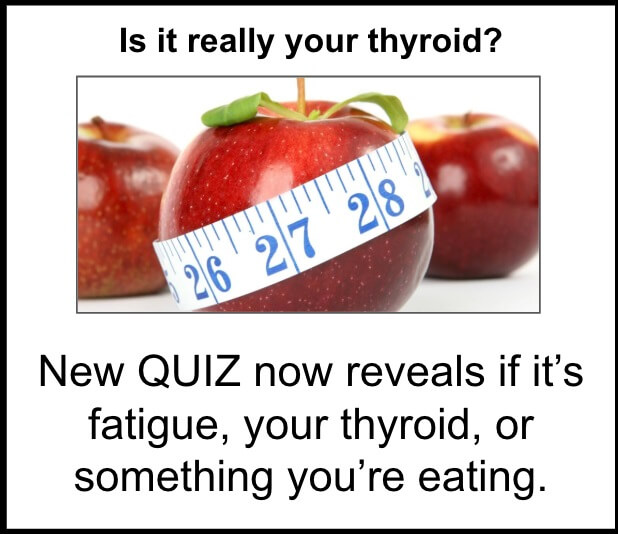1) Grab a FREE copy (Value $14.95) of one of my books Thyroid Symptom Overload
Just pay shipping $7.95 for any US orders. Or, if you want to pay full price plus shipping, order from Amazon :)
2) Take our Thyroid Quiz today and find out what "Thyroid Type" you have
This quiz will help you quickly discover where your symptoms are stemming from.
3) Join Our Thyroid Advocate Membership Site - Natural Thyroid Academy
FREE for a limited time. No credit card required.
4) Work with me and my team privately
Schedule your FREE 15 minute phone consultation and we can find out the best way to help you specifically.
“It’s kidney cancer.” Even if your doctor tells that your kidney cancer is curable, you may still feel the entire world whirling with emotions and pictures of your loved ones. How will you face it? How are you going to fight it? What if you don’t make through cancer? What about your friends? Kids? Parents? Business?
A majority of the cancer patients are unable to identify “what could happen” for at least a few days. However, your ability to understand kidney cancer conditions, and your will power and approach to following the practical advices in your routine life can help you fight cancer and treat it even before the predicted period. This guide is also useful if you want to do your best to prevent kidney cancer.
Understanding Kidney Cancer
We all know that kidneys cleanse the fluids in our body and eliminate electrolytes, excess fluid and waste from the blood. A normal human has two, fist-sized kidneys, each on the either side of backbone above the waist. Each kidney has small tubes, where the cleansing process occurs. Kidney cancer grows inside these tubes.
According to the American Cancer Society, around 50,000 cases of kidney cancer were diagnosed in 2016, and more than 200,000 kidney cancer survivors live in the US. The advance treatments of kidney cancer are amalgamated with effective and practical lifestyle strategies – a kind of technique that has helped increase the chances of survival.
Renal cell carcinoma is the medical name of kidney cancer. The disease does not unveil its symptoms in the initial stage and it can only be diagnosed by chance if the patient undergoes thorough general health diagnostic tests.
- At least 7% of the patients experience high calcium in blood and high blood counts.
- 10% of the patients experience symptoms of metastasis and high fever.
- Tumor calcification on x-ray appears in 13% of the cases.
- 21% patients experience symptoms of anemia.
- 28% patients experience unexplainable weight loss.
- 41% patients experience either back pain or abdominal mass.
- 59% patients experience blood in urine.
Fatigue, lump in the abdomen, pain on either side of the abdomen, weight loss, fatigue, loss of appetite, anemia, constant fever, and night sweats are the other symptoms of kidney cancer. If you experience any such symptoms, make sure to contact your doctor immediately.
Types of Renal Cell Carcinoma
The aggressiveness of the disease and body’s responses and symptoms differ based on the types of renal cell carcinoma. Your medical doctor should inform you about the histology, grade, and stage of your disease. It could come as a surprise to many that all kidney cancers were identified as renal cell carcinoma without any further classification until a few years ago. Having that said, not only kidney cancer is being studied thoroughly, but the treatments, technologies, and lifestyle related to it have also been intensely improved.
Clear Cell RCC
Around 66–75% cases of the kidney cancers are of Clear Cell RCC. The Von Hippel Lindau gene mutation causes hereditary kidney cancer. In fact, a majority of the non-hereditary kidney cancers also have VHL gene mutation. Clear Cell RCC could spread into other parts of the body once it is full-grown. Prognosis followed by incision surgery before its full-growth can help prevent it from spreading into the other body parts. Prognosis becomes tough once it starts spreading in the body.
Papillary RCC
Around 15% of the kidney cancer cases are of Papillary RCC. Its Type 2 is more common (10%) compared to Type 1 (5%). Papillary RCC is also hereditary and non-hereditary. Surgical removal is the most effective treatment of papillary RCC. Traditional treatments, such as immunotherapy do not help treat the disease.
Aside these two common types, there are various rare types of kidney cancer, including Chromophobe RCC, Renal Oncocytoma, Collecting Duct Carcinoma, Medullary RCC, Transitional Cell Carcinoma, Sarcomatoid RCC, Translocation Cell Carcinoma, and Renal Medullary Carcinoma. Unclassified Renal Cell Carcinoma could occur in less than 1% cases. It is the rarest form of kidney cancer. The cells of Unclassified Renal Cell Carcinoma do not match the characteristic or shape of any other kind of the disease.
Causes of Kidney Cancer
Von Hippel Lindau disease is a genetic disorder, found in at least 70% of the hereditary and non-hereditary kidney cancer cases. The genetic mutations linked to tuberous sclerosis have also been connected with kidney cancer in various studies. In this type of genetic mutation, small cysts form in the kidneys and small red lumps appear on the skin. Birt Hogg Dube Syndrome has also been associated with kidney cancer. Its symptoms include appearance of small lumps on ears, nose, neck, forehead, and cheeks.
Aside hereditary causes, the exact external causes of kidney cancer are relatively unknown and involve a wide range of factors. Obesity i.e. BMI above 30 is highly linked with kidney cancer. Smoking and drinking alcohol have been strongly associated with kidney cancer as both habits interrupt the kidney’s cleansing process. Hypertension is a direct cause of kidney cancer, and all causes of hypertension are included in the indirect causes of the disease, such as unhealthy lifestyle, lack of exercise, poor eating habits, etc. Any other kidney disease, which requires long term dialysis treatment, could also cause kidney cancer if dialysis system replaces the natural functions of kidneys.
People above the age of 60 years are at higher risk of kidney cancer. Repeated exposure to cancerous chemicals, such as asbestos, cadmium, and trichloroethylene also increases the risk of kidney cancer.
Diagnosis of Kidney Cancer
Your medical doctor will suggest the initial blood and urine tests. These tests are also necessary to rule out other possibilities linked to the symptoms of kidney cancer, such as kidney stones. A change in the shape of kidney could be diagnosed with the help of abdominal ultrasound. CT Scan or image-guided biopsy are advanced diagnostic techniques.
Transitional cell cancer requires additional tests for diagnosis, including excretory urogram and cystoscopy. In excretory urogram, a dye is injected in the arm of the patient. The kidneys process the dye and shows its signs on the X-ray. In cystoscopy, a long tube with a light and lens on the other end is inserted through the urethra. The lens and light provides image of the inside of the bladder. If the disease remains undiagnosed but its symptoms retain, the similar technique can be used to take biopsy samples.
Treatment Options
Surgery to remove the tumor is the most suitable option. However, the surgeon may have to remove the kidney in certain cases. By incorporating a few lifestyle changes, the patient may live a healthy and active life with one kidney.
Nephrectomy is the surgery that involves removal of the kidney, its nearby adrenal gland, and some part of the healthy tissue. Partial nephrectomy surgery is conducted when the tumor is smaller than 1.5 inches. Nephron sparing surgery is practiced when the patient has one kidney or kidney cancer falls in the first or second stage. In nephron sparing, only the tumor, and not the kidney, is removed.
All the aforementioned treatment options are suitable if the tumor has not grown outside the kidney. A combination treatment of surgery and pain relieving medicines is scheduled along with thorough diagnosis and scanning of the tumors in the body if the tumor grows outside the kidneys.
The non-surgical treatments include Cryoablation and Embolization. Cryoablation is an alternative freeze-thaw technique. The cancer cells are destroyed by injecting croprobes, special needles into the tumor cells. The tip of each needle contains gas to freeze the tumor; another gas thaws the tumor cells. The alternative process may cause minor bleeding and pain as well as little damage to the surrounding tissues. Embolization technique blocks the blood flow to the tumor. A catheter is passed through the groin into the blood vessel. A special material, passed through the catheter, blocks the blood flow to the tumor, depriving it of oxygen and other nutrients. This technique does not destroy the tumor but shrinks it.
Immunotherapy is also a non-surgical advance treatment, which includes synthetic versions of chemicals that enhance the immune system’s capability to fight off the disease. Radiation therapy is also required in advance treatment of kidney cancer.
After the treatment of kidney cancer, it is necessary that the medical doctor guides the patient about survival tips and lifestyle changes. Prevention guidance is equally important to avoid kidney cancer recurrence.
References
https://www.kidneycancer.org/knowledge/learn/about-kidney-cancer/
https://medlineplus.gov/kidneycancer.html
http://www.nhs.uk/conditions/cancer-of-the-kidney/Pages/Introduction.aspx
https://www.medicalnewstoday.com/articles/164659.php
https://www.cancer.org/cancer/kidney-cancer.html
http://www.medicinenet.com/kidney_cancer/article.htm








